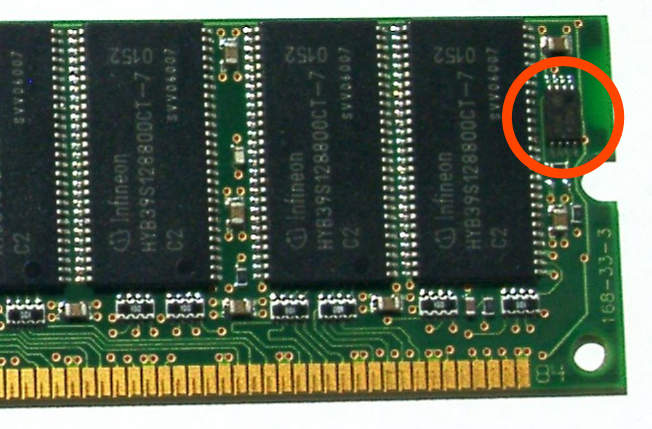|
NForce 700
The nForce 700 is a chipset series designed by Nvidia first released in December 2007. The series supports both Intel Core 2 and AMD Phenom processors, and replaces the nForce 600 series chipsets. Several members were spotted, including the codenamed ''MCP72'' for AMD processors and the ''C72'' for Intel processors, launched with the name "nForce 780a" and "nForce 780i" chipsets respectively. Currently, the released variants are the 750i, 780i, 790i, and 790i Ultra. AMD chipsets The memory controller is built-in into the CPU, the supported memory type depends on the CPU and socket used. This way there are no supported memory types listed here. nForce 780a SLI *Codenamed ''MCP72XE'' * Motherboard GPU (mGPU): GeForce 8200 ** DirectX 10 compliant ** PureVideo HD *Addition of the nForce 200 PCI-E bridge (previously codenamed ''BR-04'') **Connected to the northbridge via a 4.5 GT/s proprietary bus using the PCI-E interface **Support for PCI-E 2.0 [...More Info...] [...Related Items...] OR: [Wikipedia] [Google] [Baidu] |
Nvidia
Nvidia Corporation ( ) is an American multinational corporation and technology company headquartered in Santa Clara, California, and incorporated in Delaware. Founded in 1993 by Jensen Huang (president and CEO), Chris Malachowsky, and Curtis Priem, it designs and supplies graphics processing units (GPUs), application programming interfaces (APIs) for data science and high-performance computing, and system on a chip units (SoCs) for mobile computing and the automotive market. Nvidia is also a leading supplier of artificial intelligence (AI) hardware and software. Nvidia outsources the manufacturing of the hardware it designs. Nvidia's professional line of GPUs are used for edge-to-cloud computing and in supercomputers and workstations for applications in fields such as architecture, engineering and construction, media and entertainment, automotive, scientific research, and manufacturing design. Its GeForce line of GPUs are aimed at the consumer market and are used in ap ... [...More Info...] [...Related Items...] OR: [Wikipedia] [Google] [Baidu] |
Enhanced Performance Profiles
In computing, serial presence detect (SPD) is a standardized way to automatically access information about a memory module. Earlier 72-pin SIMMs included five pins that provided five bits of ''parallel presence detect'' (PPD) data, but the 168-pin DIMM standard changed to a serial presence detect to encode more information. When an ordinary modern computer is turned on, it starts by doing a power-on self-test (POST). Since about the mid-1990s, this process includes automatically configuring the hardware currently present. SPD is a memory hardware feature that makes it possible for the computer to know what memory is present, and what memory timings to use to access the memory. Some computers adapt to hardware changes completely automatically. In most cases, there is a special optional procedure for accessing BIOS parameters, to view and potentially make changes in settings. It may be possible to control how the computer uses the memory SPD data—to choose settings, selective ... [...More Info...] [...Related Items...] OR: [Wikipedia] [Google] [Baidu] |
DDR3 SDRAM
Double Data Rate 3 Synchronous Dynamic Random-Access Memory (DDR3 SDRAM) is a type of synchronous dynamic random-access memory (SDRAM) with a high bandwidth (" double data rate") interface, and has been in use since 2007. It is the higher-speed successor to DDR and DDR2 and predecessor to DDR4 synchronous dynamic random-access memory (SDRAM) chips. DDR3 SDRAM is neither forward nor backward compatible with any earlier type of random-access memory (RAM) because of different signaling voltages, timings, and other factors. DDR3 is a DRAM interface specification. The actual DRAM arrays that store the data are similar to earlier types, with similar performance. The primary benefit of DDR3 SDRAM over its immediate predecessor DDR2 SDRAM, is its ability to transfer data at twice the rate (eight times the speed of its internal memory arrays), enabling higher bandwidth or peak data rates. The DDR3 standard permits DRAM chip capacities of up to 8 gigabits (Gbit) (so 1 gigabyte by ... [...More Info...] [...Related Items...] OR: [Wikipedia] [Google] [Baidu] |
Intel Core 2
Intel Core 2 is a processor family encompassing a range of Intel's mainstream 64-bit x86-64 single-, dual-, and quad-core microprocessors based on the Core microarchitecture. The single- and dual-core models are single- die, whereas the quad-core models comprise two dies, each containing two cores, packaged in a multi-chip module. The Core 2 range is the last flagship range of Intel desktop processors to use a front-side bus (FSB). The introduction of Core 2 relegated the Pentium brand to the mid-range market, and reunified laptop and desktop CPU lines for marketing purposes under the same product name, which were formerly divided into the Pentium 4, Pentium D, and Core Solo/Duo brands. The ''Core 2'' processor line was introduced on July 27, 2006, comprising the ''Duo'' (dual-core) and ''Extreme'' (dual- or quad-core CPUs for enthusiasts), and in 2007, the ''Quad'' ( quad-core) and ''Solo'' ( single-core) sub-brands. Intel Core 2 processors with vPro technology (designed f ... [...More Info...] [...Related Items...] OR: [Wikipedia] [Google] [Baidu] |
Front Side Bus
The front-side bus (FSB) is a computer communication interface (bus) that was often used in Intel-chip-based computers during the 1990s and 2000s. The EV6 bus served the same function for competing AMD CPUs. Both typically carry data between the central processing unit (CPU) and a memory controller hub, known as the northbridge. Depending on the implementation, some computers may also have a back-side bus that connects the CPU to the cache. This bus and the cache connected to it are faster than accessing the system memory (or RAM) via the front-side bus. The speed of the front side bus is often used as an important measure of the performance of a computer. The original front-side bus architecture was replaced by HyperTransport, Intel QuickPath Interconnect, and Direct Media Interface, followed by Intel Ultra Path Interconnect and AMD's Infinity Fabric. History The term came into use by Intel Corporation about the time the Pentium Pro and Pentium II products were announced, i ... [...More Info...] [...Related Items...] OR: [Wikipedia] [Google] [Baidu] |
D-subminiature
The D-subminiature or D-sub is a common type of electrical connector. They are named for their characteristic D-shaped metal shield. When they were introduced, D-subs were among the smallest connectors used on computer systems. Description, nomenclature, and variants A D-sub contains two or more parallel rows of pins or sockets usually surrounded by a D-shaped metal shield, or shell, that provides mechanical support, ensures correct orientation, and may screen against electromagnetic interference. Calling that shield a shell (or D-shell) can be ambiguous, as the term shell is also short for the cable shell, or backshell. D-sub connectors have gender: parts with pin contacts are called ''male connectors'' or ''plugs'', while those with socket contacts are called ''female connectors'' or ''sockets''. The socket's shield fits tightly inside the plug's shield. Panel-mounted connectors usually have #4-40 UNC (as designated with the Unified Thread Standard) jackscrews that ... [...More Info...] [...Related Items...] OR: [Wikipedia] [Google] [Baidu] |
Digital Visual Interface
Digital Visual Interface (DVI) is a video display interface developed by the Digital Display Working Group (DDWG). The digital interface is used to connect a video source, such as a video display controller, to a display device, such as a computer monitor. It was developed with the intention of creating an industry standard for the transfer of uncompressed digital video content. DVI devices manufactured as DVI-I have support for analog connections, and are compatible with the analog VGA interface by including VGA pins, while DVI-D devices are digital-only. This compatibility, along with other advantages, led to its widespread acceptance over competing digital display standards Plug and Display (P&D) and Digital Flat Panel (DFP). Although DVI is predominantly associated with computers, it is sometimes used in other consumer electronics such as television sets and DVD players. History An earlier attempt to promulgate an updated standard to the analog VGA connector was mad ... [...More Info...] [...Related Items...] OR: [Wikipedia] [Google] [Baidu] |
High-Definition Multimedia Interface
High-Definition Multimedia Interface (HDMI) is a proprietary digital interface used to transmit high-quality video and audio signals between devices. It is commonly used to connect devices such as televisions, computer monitors, projectors, gaming consoles, and personal computers. HDMI supports uncompressed video and either compressed or uncompressed digital audio, allowing a single cable to carry both signals. Introduced in 2003, HDMI largely replaced older analog video standards such as composite video, S-Video, and VGA in consumer electronics. It was developed based on the CEA-861 standard, which was also used with the earlier Digital Visual Interface (DVI). HDMI is electrically compatible with DVI video signals, and adapters allow interoperability between the two without signal conversion or loss of quality. Adapters and active converters are also available for connecting HDMI to other video interfaces, including the older analog formats, as well as digital formats ... [...More Info...] [...Related Items...] OR: [Wikipedia] [Google] [Baidu] |
DisplayPort
DisplayPort (DP) is a digital interface used to connect a video source, such as a Personal computer, computer, to a display device like a Computer monitor, monitor. Developed by the Video Electronics Standards Association (VESA), it can also carry digital audio, USB, and other types of data over a single cable. Introduced in the 2000s, DisplayPort was designed to replace older standards like VGA connector, VGA, DVI, and FPD-Link. While not directly compatible with these formats, Adapter, adapters are available for connecting to HDMI, DVI, VGA, and other interfaces. Unlike older interfaces, DisplayPort uses Data packet, packet-based transmission, similar to how data is sent over USB or Ethernet. The design enables support for high resolutions and adding new features without changing the connector. DisplayPort includes an auxiliary data channel used for device control and automatic configuration between source and display devices. It supports standards such as Display Data Channe ... [...More Info...] [...Related Items...] OR: [Wikipedia] [Google] [Baidu] |
Dolby TrueHD
Dolby TrueHD is a lossless, multi-channel audio codec developed by Dolby Laboratories for home video, used principally in Blu-ray Disc and compatible hardware. Dolby TrueHD, along with Dolby Digital Plus (E-AC-3) and Dolby AC-4, is one of the intended successors to the Dolby Digital (AC-3) lossy surround format. Dolby TrueHD competes with DTS's DTS-HD Master Audio (DTS-HD MA), another lossless surround sound codec. The Dolby TrueHD specification provides for up to 16 discrete audio channels, each with a sampling rate of up to 192 kHz and sample depth of up to 24 bits. Dolby's compression mechanism for TrueHD is Meridian Lossless Packing (MLP); prior to Dolby TrueHD, MLP was used for the DVD-Audio format, although the two formats' respective implementations of MLP are not mutually compatible. A Dolby TrueHD audio stream varies in bitrate, as does any other losslessly compressed audio format. Like its predecessor, Dolby TrueHD's bitstream carries program metadata, or n ... [...More Info...] [...Related Items...] OR: [Wikipedia] [Google] [Baidu] |
DTS-HD
DTS-HD Master Audio (DTS-HD MA; known as DTS++ before 2004) is a multi-channel, lossless audio codec developed by DTS as an extension of the lossy DTS Coherent Acoustics codec (DTS CA; usually itself referred to as just DTS). Rather than being an entirely new coding mechanism, DTS-HD MA encodes an audio master in lossy DTS first, then stores a concurrent stream of supplementary data representing whatever the DTS encoder discarded. This gives DTS-HD MA a lossy "core" able to be played back by devices that cannot decode the more complex lossless audio. DTS-HD MA's primary application is audio storage and playback for Blu-ray media; it competes in this respect with Dolby TrueHD, another lossless surround format. Specifications DTS-HD MA can store up to 8 discrete channels of audio ( 7.1 surround) at up to a 24 bit sample depth and 192 kHz sampling frequency (96 kHz for 6.1 or 7.1 surround). Although DTS-HD MA, and the related DTS-HD, allow virtually any number of cha ... [...More Info...] [...Related Items...] OR: [Wikipedia] [Google] [Baidu] |


